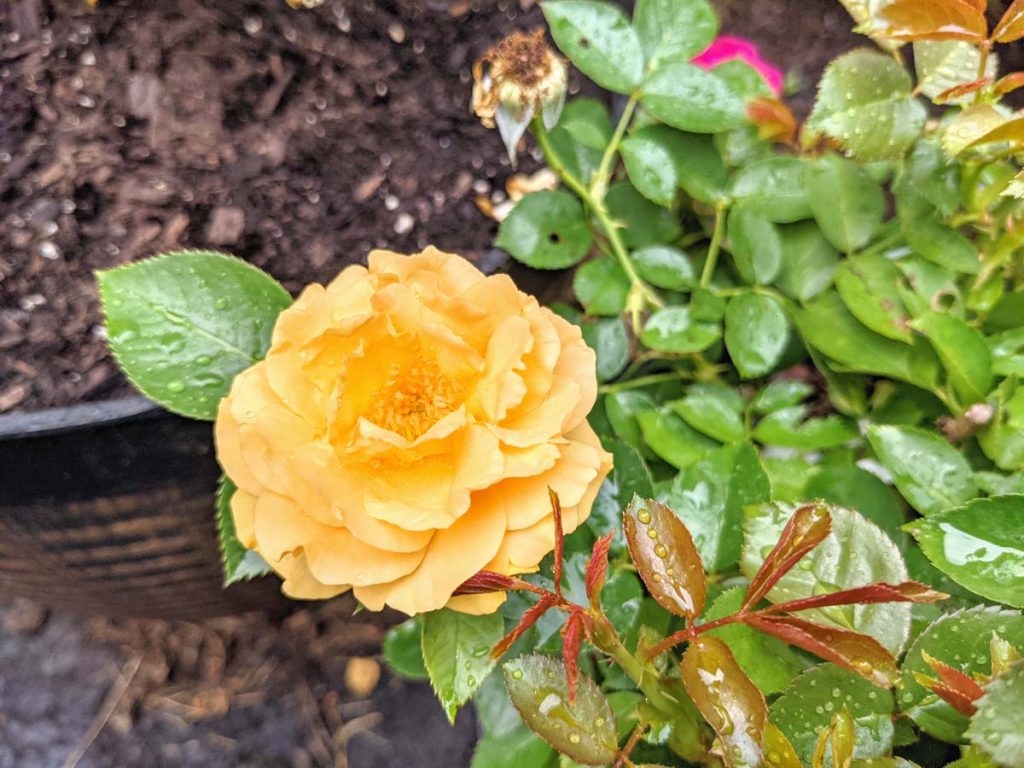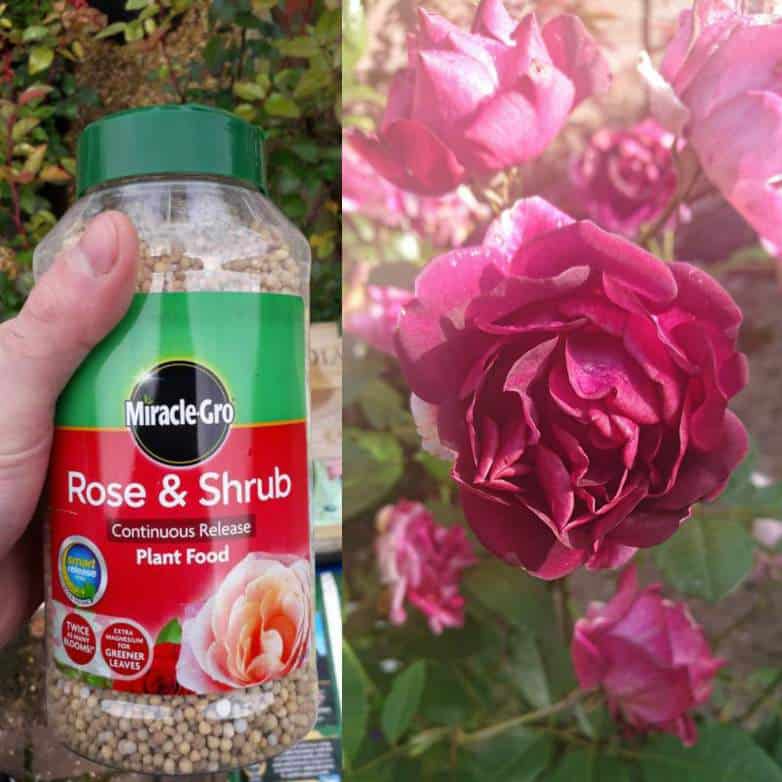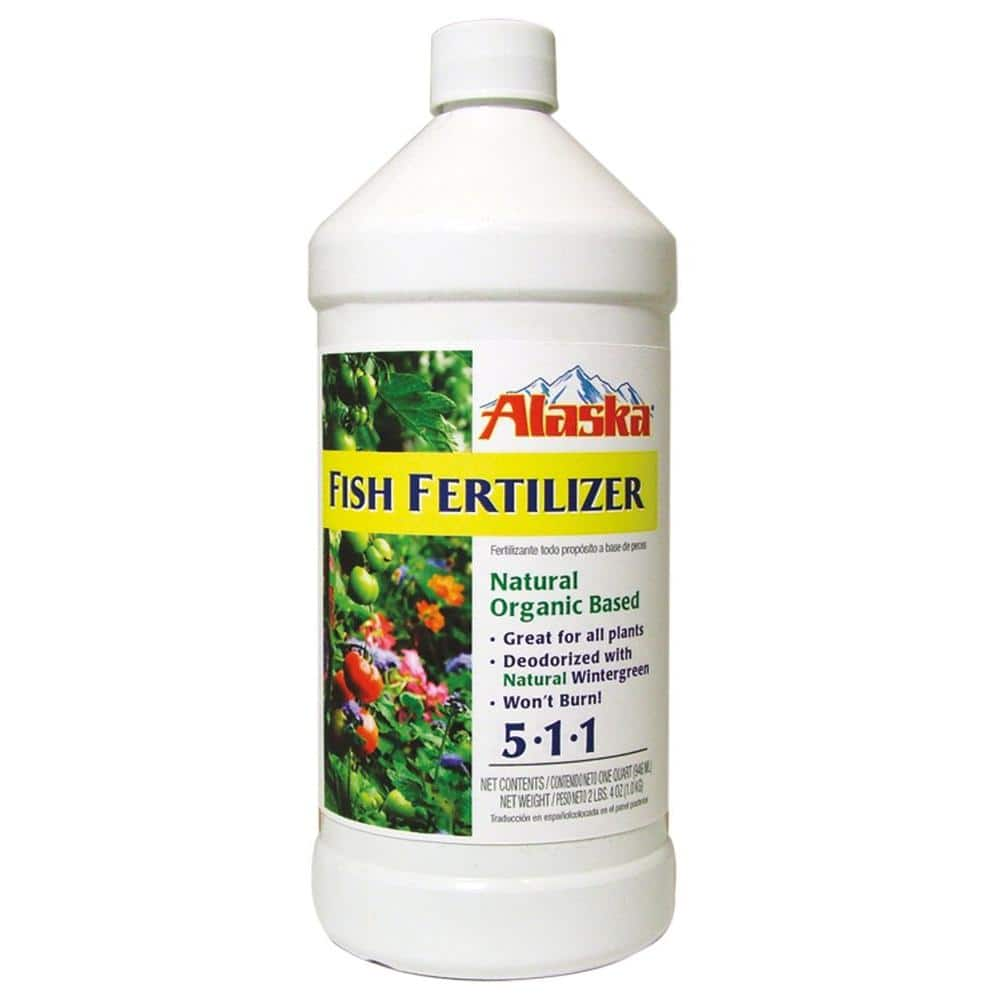
Roses are generally resilient plants that can withstand a variety of situations, but because they are heavy feeders, a good fertilization applied at the proper time will result in the healthiest roses with the greatest amount of blossoms.
Apply nitrogen, phosphate, and potash fertilizer to roses starting in April or May and reapply it once a month until August 15th. For optimal results, combine alfalfa and bone meal with fish emulsion and apply once every 4-6 weeks.
After August 15th, you should halt fertilizer applications since rose foliage needs time to get ready for its winter dormancy. The fertilizer’s nitrogen stimulates fresh, delicate growth that is more vulnerable to harm from frost.
To activate the soil’s ecology and protect the roots from the worst of the winter cold, I advise spreading a mulch such as compost, well-rotted horse dung, or leaf mould around your roses towards the beginning of spring.
A “balanced diet” for roses typically entails alternating and utilizing fertilizers in conjunction with one another. This guarantees the roses receive all the nutrients they require to be healthy and produce the most blossoms, as well as a healthy soil ecosystem.
The best outcomes for feeding roses come from variety.
Table of Contents
When to use Liquid
Fertilizers for Roses
In late April to early May (or until there is a reduced risk of frost), you can apply fish emulsion to your rose bed. From then on, you can apply it once a month together with other fertilizers until the middle of August.
Fish emulsion is a quick-acting, short-term fertilizer that penetrates the soil and gets to the roots more quickly than granulated fertilizers.
Additionally, fish emulsion has a lot of nitrogen, which is excellent for promoting new growth and brightening leaves. However, if it gets too cold, this could become a concern because the new, softer growth is more vulnerable to frost damage.
Wait until at least late April or early May, just as the new leaves are beginning to fully open, and only apply if the nights are constantly getting warmer. The new growth may be unaffected by a late frost, but if you notice any damaged leaves (leaves that have turned black), simply trim the growth off, and your rose should be fine.
You must dilute the fish emulsion in your watering can at a rate of around 1 tablespoon per gallon of water. A normal watering can holds 2 gallons of water. This will provide a nice boost of nitrogen, phosphorous, and potassium for one or two established rose bushes, which are all essential nutrients that roses need in significant proportions.
For robust, healthy roses, phosphorus is associated with promoting the growth of roots, stems, and boosting flowering.
Your rose bush values potassium because it encourages larger blossoms and makes plants more resilient to drought and frequent illnesses.
Fish emulsion is a fantastic fertilizer for enhancing the ecology of your soil and providing your plants with nutrients directly, but it is thought of as a short-term fertilizer and is best used in conjunction with other slower release fertilizers (like alfalfa/blood and bone meal) to provide a wider spectrum of nutrients.
You can assure a healthy, disease-resistant rose that will put on a beautiful floral display by administering once a month.
August is the month to stop using fish emulsion because the new growth that nitrogen induces requires time to stiffen up and get ready for the winter.
If you don’t thoroughly wash it in, the smell of fish will attract flies, cats, and dogs, so make sure you soak the rose after application.
Applying some mulch, such compost, around the plant’s base will also help to mask the odor and keep insects away.
You don’t have to work it in, so don’t disrupt the roots.
Temporary fertilizer
Fertilizers that are worked into the soil progressively decompose and improve the soil ecology, releasing nutrients over time.
Adding liquid fertilizers to a watering can once a month requires more work because they function quickly, quickly take away an abundance of nutrients, and act quickly.
When to Fertilize
with Alfalfa and Bone Meal for Roses

Fish emulsion is best used in conjunction with alfalfa and bone meal because they both break down and release fertility into the soil more gradually, feed soil microbes, enhance soil structure for better drainage, and prepare the soil to keep the proper amount of moisture.
While alfalfa and bone meal replenish the soil over time for a more consistent flow of nutrients, fish emulsion gets to the roots rapidly but can also wash out into the soil rather quickly.
Alfalfa and bone meal are both very simple to use as fertilizers and provide roses with a hefty dose of minerals like nitrogen, magnesium, zinc, calcium, iron, and potash. These nutrients all support rose health and disease resistance.
Triacontanol, a substance found in alfalfa, enhances the basal cracks in rose bushes, promoting new shoots and, ultimately, more blossoms.
It is always a good idea to brush back any mulch surrounding your rose and distribute the granules around the base of the plant before raking the mulch back over the top and giving it a thorough soak with the hose. Bone meal has a tendency to smell, and alfalfa can be consumed by wild rabbits.
This will stop any unpleasant odors from arising and encourage the meal and granules to begin breaking down in the soil so that they can reach the roots and prevent wildlife from eating them.
When to Apply Rose Formula or Chemical Fertilizers
Any chemical fertilizers or rose formulas should always be applied according to the manufacturer’s instructions, which you should always read before using.
Typically, it is advised to fertilize your rose with chemicals after pruning it in the spring and again after the first bloom. Before the second bloom, a third treatment is occasionally advised.
However, I must stress how important it is to adhere to the manufacturer’s instructions because using too much chemical fertilizer will damage your rose’s roots.
Avoid the temptation to overfertilize because doing so won’t have the desired effect and may really cause more harm than good.
Miracle Grow Rose Mix is the rose mixture I personally prefer. All the nutrients a rose requires are present in this pre-made solution in the proper proportions. During the growing season, the granules only need to be applied twice: once at the beginning of spring in April or May and once more in July.
Because it is so simple to apply and has given me healthy roses that are brimming with flowers, I personally use this fertilizer. It is the ideal straightforward rose complement.
When to Mulch for
Healthy Roses

Additionally, when mulching, the focus is less on feeding the rose roots directly and more on nourishing and enhancing the soil for the roses.
Organic material, like compost, leaf mold, and horse manure, all make excellent mulch because they not only release nutrients into the soil but also:
- Enhance the soil’s structure to make it simpler for water to drain and for roots to flow through it and get water and nutrients.
- summertime ground cooling (roots prefer cool temperatures)
- – BEST GRANULES: Down to Earth Organic Rose & Flower Fertilizer Mix.The nutrients are released gradually as soil-worked fertilizers decompose and improve the soil ecology.
- Adding liquid fertilizers to a watering can once a month requires more work because they act quickly, take away nutrients quickly, and act in quantity.
By August 15th, no new growth should be encouraged as the rose is getting ready for its winter hibernation. You can begin applying bone meal and Alfalfa fertilizers to roses in April and continue doing so every four to six weeks.
The use of alfalfa and bone meal significantly enhances the usage of fish emulsion since they both break down and release fertility into the soil much more gradually, feed the soil microbes, and strengthen the soil structure for better drainage and condition the soil to keep the proper amount of moisture.
- In contrast to alfalfa and bone meal, which replenish the soil over time for a more consistent flow of nutrients, fish emulsion quickly reaches the roots but can also drain away into the soil rather quickly.
- It is simple to fertilize roses with alfalfa and bone meal, and they both provide a big dose of nutrients like nitrogen, magnesium, zinc, calcium, iron, and potash. These nutrients all support rose health and disease resistance.
- Triacontanol, a substance found in alfalfa, is a growth-stimulating compound that causes rose bushes to have more basal breaks, which leads to new shoots and ultimately more flowers.
It is usually a good idea to brush back any mulch around your rose and distribute the granules around the base of the plant before raking the mulch back over top and giving the area a thorough wash with the hose. Bone meal has a tendency to smell, and alfalfa can be consumed by wild rabbits.
In order for the meal and granules to reach the roots and prevent wildlife from eating them, this will stop any unpleasant odors from arising and encourage their beginning to break down in the soil.
According to the manufacturer’s instructions, which you should carefully read before use, the recommended application of any chemical fertilizers or rose formula will vary.
Once your rose has been clipped in the spring, it is generally advised to fertilize it chemically. A second application should be made after the first bloom. Prior to the second bloom, it is occasionally advised to apply a third time.
To be careful, though, as too much chemical fertilizer might damage your rose’s roots, I must stress how crucial it is to adhere to the manufacturer’s instructions.
Avoid the temptation to overfertilize because it won’t give you the desired results. Too much fertilizer can be just as damaging as not enough.
FAQ
Is fish fertilizer good for potted plants?
Miracle Grow Rose Mix is my personal favorite Rose formula. All the nutrients a rose need are present in this pre-made solution in the appropriate amounts. During the growing season, the granules only need to be applied twice: once in April or May at the beginning of spring and again in July.
